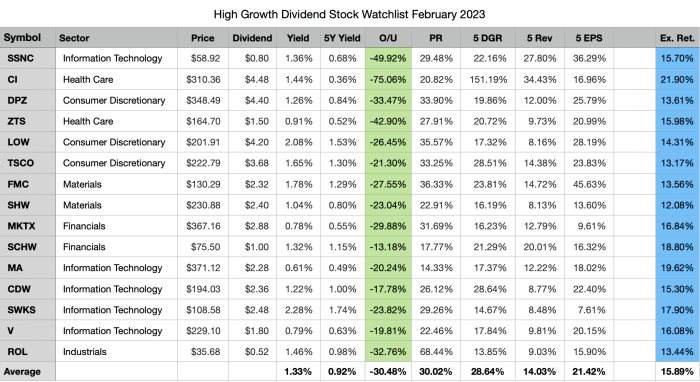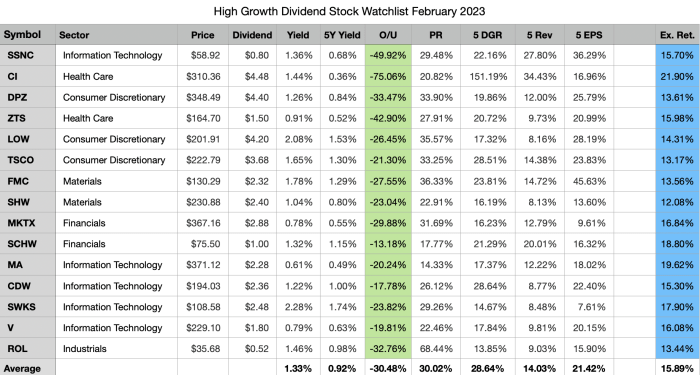Delving into the realm of Best Dividend Stocks to Consider in 2025: Is JEPI One of Them?, this paragraph sets the stage for an enlightening exploration, drawing readers in with a blend of informative insights and captivating narratives.
The subsequent paragraph will offer a detailed and comprehensive look at the subject matter.
Overview of Dividend Stocks
Dividend stocks are shares of companies that pay out a portion of their earnings to shareholders on a regular basis. These stocks are often sought after by investors looking for stable income streams in addition to potential capital appreciation.Investing in dividend-paying stocks can offer several benefits to investors.
Firstly, they provide a steady income stream, which can be especially attractive for retirees or those looking for passive income. Additionally, dividend-paying stocks are often seen as less volatile than non-dividend stocks, providing a cushion during market downturns. Furthermore, companies that consistently pay dividends are typically financially stable and profitable, indicating a strong performance track record.
Examples of Well-Known Dividend Stocks
- Johnson & Johnson (JNJ): A pharmaceutical giant with a long history of increasing dividends, making it a favorite among income investors.
- Procter & Gamble (PG): Known for its consumer goods products, Procter & Gamble has a solid dividend track record and stable performance.
- AT&T (T): A telecommunications company that offers a high dividend yield, attracting investors seeking income.
Criteria for Selecting Dividend Stocks

When evaluating dividend stocks, there are several key factors to consider to make informed investment decisions. Among these factors are dividend yield, payout ratio, and dividend growth history, which play a crucial role in determining the attractiveness of a stock for income-seeking investors.
Importance of Dividend Yield
The dividend yield is a significant metric that indicates the annual dividend payment as a percentage of the stock price. A higher dividend yield typically suggests a better income-generating potential for investors. However, it is essential to balance this with other factors to ensure the sustainability of dividend payments.
- Dividend yield helps investors assess the income potential of a stock.
- A high dividend yield may indicate an undervalued stock, but it can also signal financial distress or an unsustainable payout.
- Comparing the dividend yield of a stock to its historical average or industry peers can provide valuable insights into its attractiveness.
Significance of Payout Ratio
The payout ratio, which represents the proportion of earnings paid out as dividends, is another critical factor to consider when evaluating dividend stocks. A sustainable payout ratio ensures that a company can continue to reward shareholders without compromising its financial health.
A lower payout ratio indicates that a company retains more earnings for growth or to weather economic downturns.
- A payout ratio above 100% may suggest that a company is paying out more in dividends than it earns, which is unsustainable in the long run.
- Stable and consistent payout ratios over time indicate a company's commitment to rewarding shareholders while maintaining financial stability.
Assessing Dividend Growth History
Examining a company's dividend growth history can provide valuable insights into its ability to increase dividends over time. Consistent dividend growth demonstrates financial strength, management's confidence in future earnings, and a commitment to shareholder value.
- Companies with a history of increasing dividends annually signal their ability to generate steady cash flows and adapt to changing market conditions.
- Investors should look for companies with a track record of dividend growth, as this can enhance total returns and provide a reliable income stream.
- Studying the dividend growth rate over different time periods can help assess the company's long-term dividend sustainability.
Introduction to JEPI
JEPI is a dividend ETF (Exchange-Traded Fund) that seeks to provide investors with exposure to high-quality dividend-paying companies.
The investment strategy of JEPI focuses on selecting dividend stocks with strong fundamentals, sustainable dividend payments, and potential for long-term growth.
Comparison with Other Dividend Stocks or ETFs
- JEPI vs. Individual Dividend Stocks:
- JEPI offers diversification by investing in a basket of dividend-paying stocks, reducing individual company risk.
- Individual dividend stocks may offer higher dividend yields but come with higher volatility and risk.
- JEPI vs. Other Dividend ETFs:
- JEPI may have a different selection criteria or weighting methodology compared to other dividend ETFs, impacting performance.
- Investors should consider expense ratios, dividend yield, and historical performance when comparing JEPI to other dividend ETFs.
Performance Analysis of JEPI
When evaluating the performance of JEPI, it is crucial to consider its historical data in comparison to benchmark indices. This helps in understanding how JEPI has fared in different market conditions and provides insights into its total return, dividend yield, and risk-adjusted performance.
Historical Performance Compared to Benchmark Indices
JEPI's historical performance can be evaluated by comparing it to benchmark indices such as the S&P 500 or the Dow Jones Industrial Average. By analyzing JEPI's returns in relation to these benchmarks, investors can assess how well the ETF has performed over time.
Performance During Different Market Conditions
It is essential to analyze how JEPI has performed during various market conditions, including bull markets, bear markets, and periods of volatility. Understanding JEPI's behavior in different scenarios can provide valuable insights into its resilience and stability as an investment option.
Total Return, Dividend Yield, and Risk-Adjusted Performance
Investors often look at the total return, dividend yield, and risk-adjusted performance of a stock or ETF to gauge its profitability and risk levels. JEPI's total return accounts for both capital appreciation and dividends received, while its dividend yield indicates the annual dividend income relative to its price.
Additionally, assessing JEPI's risk-adjusted performance helps investors understand how well the ETF has performed relative to the risk taken.
Growth Potential of JEPI
The growth potential of JEPI, an ETF that focuses on high-dividend stocks, is a key consideration for investors looking to maximize returns in the coming years. Let's evaluate the factors that could influence JEPI's future performance and explore expert opinions on its growth potential.
Factors Influencing Growth
- Market Conditions: JEPI's performance will be influenced by overall market conditions, including economic growth, interest rates, and geopolitical events.
- Dividend Yield: The dividend yield of the underlying stocks in JEPI will play a crucial role in determining its growth potential.
- Management Strategy: The effectiveness of the management team in selecting high-quality dividend-paying stocks will impact JEPI's growth trajectory.
Expert Opinions
According to financial analysts, JEPI is well-positioned to benefit from the current market environment, with its focus on dividend stocks offering stability and potential for growth.
Experts also highlight JEPI's diversified portfolio as a key strength, providing investors with exposure to a wide range of high-dividend stocks.
Risks Associated with Dividend Stocks
Investing in dividend stocks carries certain risks that investors should be aware of in order to make informed decisions. These risks can impact the returns and overall performance of a dividend stock portfolio.
Market Volatility and Economic Conditions
Market volatility and changes in economic conditions can have a significant impact on dividend stocks. During periods of economic downturn or market instability, companies may face financial challenges that could lead to a decrease or suspension of dividend payments. Additionally, a volatile market can cause fluctuations in stock prices, which may affect the overall yield of dividend-paying securities.
- Uncertainty in the market can lead to a decrease in stock prices, negatively impacting the value of dividend stocks.
- Economic recessions or downturns can result in companies cutting back on dividends to conserve cash.
- Changes in interest rates or inflation levels can also influence the attractiveness of dividend stocks compared to other investment options.
Mitigating Risks
To mitigate risks associated with dividend stocks, investors can consider the following strategies:
- Diversification: Spread investments across different sectors and industries to reduce exposure to specific risks.
- Focus on Quality: Prioritize companies with a history of stable dividend payments, strong financials, and consistent earnings growth.
- Monitor Market Conditions: Stay informed about economic trends, interest rate changes, and overall market performance to adjust investment strategies accordingly.
- Long-Term Perspective: Take a long-term approach to investing in dividend stocks to ride out short-term fluctuations and benefit from compounding returns.
End of Discussion
Concluding the discussion, this paragraph wraps up the key points in a compelling manner, leaving readers with a lasting impression.
Questions Often Asked
What are the key factors to consider when evaluating dividend stocks?
Key factors include dividend yield, payout ratio, and dividend growth history, among others.
How can one assess the stability and sustainability of dividend payments?
Stability and sustainability can be assessed by analyzing the company's financial health and historical dividend payment trends.
What are some common risks associated with investing in dividend stocks?
Common risks include market volatility, economic conditions, and potential changes in dividend policies.



